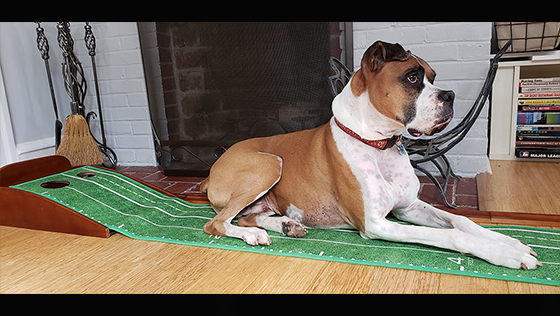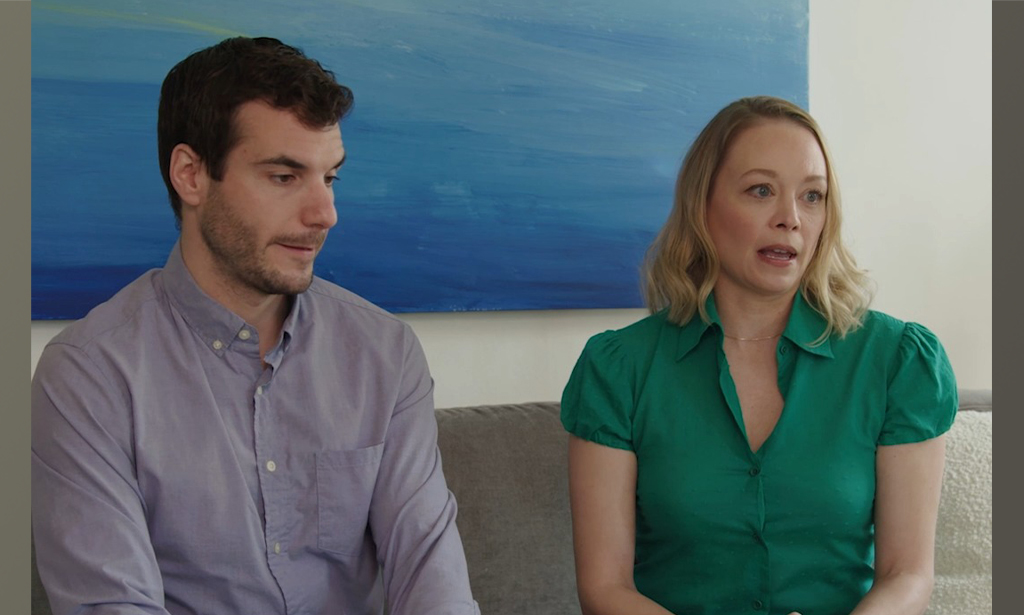News
The Unsolved Mystery Behind Augusta’s $1.50 Snack…
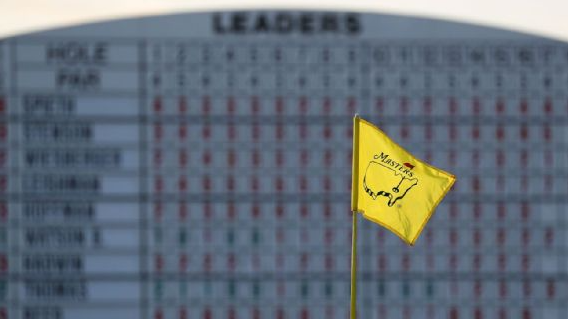
The Masters Champions Dinner, the golf world’s most revered dinner invitation is once again upon us. A tradition unlike any other, will once again be held at Augusta National this year… Ah Hah Moment – No wonder why I love April so much!
Here’s the low down: More than 30 green jacket winners will congregate in an opulent lounge on the second floor of golf’s most exclusive grounds, Augusta National clubhouse, on the Tuesday evening before the tournament starts for a meal that many will subsequently describe as the greatest of the year.
Scottie Scheffler, the current champion, has the honor of selecting the menu for this year’s event as is customary. Recently, Scheffler has put a lot of effort into creating a meal in the style of himself with the help of his wife Meredith and the culinary team at Augusta National. Cheeseburger sliders, firecracker shrimp, tender Texas ribeye, and charred redfish are among the menu items. There are also a number of rare treats from the club’s wine cellar, and a warm chocolate chip cookie pan completes the meal.
The reigning Masters winner is reportedly in charge of planning every aspect of the event, from the soup course to the dessert garnish. Most champions take this responsibility very seriously, painstakingly nurturing their wine selections and sourcing their ingredients from far-off places.
The one menu item that this (or any) tournament champion has chosen not to examine may be the most serious aspect of the Champions Dinner. This aperitif is a tradition unto itself; it is a snack that is so deeply ingrained in club culture and so closely associated with the Champions Dinner that it is served without hesitation at all significant club events.
This is the tale of the olives at Augusta National, including the club legend who discovered them, the custom that solidified them, and the 129-year-old family business that produced them.
They are the most cherished food in the club. They might also be the world’s best olives if you believe the palates of people who eat them every year.
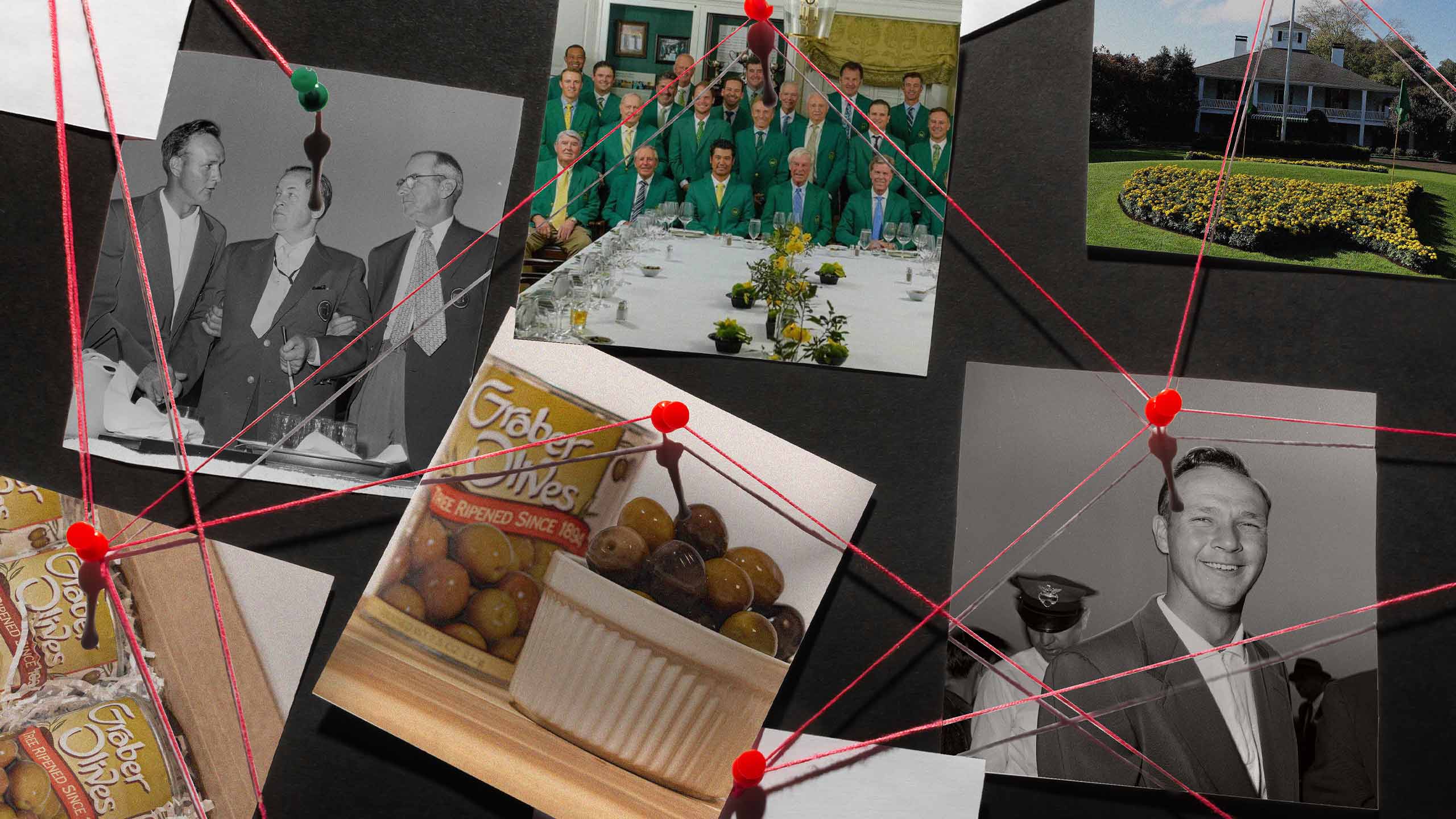
How The Heck Did it All Start?
Shoot, simply put…In the beginning, Augusta National had golf, and it had olives. Boom done – well not really. So read on.
It is challenging to determine the exact beginnings of the club’s obsession with the greenish fruits that garnish its tables, but it is simpler to understand how its kitchen staff learned to appreciate them. Cliff Roberts is his full name.
Roberts was an Augusta National co-founder. The club’s initial chairman, “Mr. Roberts” (as he was known by practically everyone who knew him), was a revolutionary force in bringing the club and the competition to national prominence in the early 20th century.
By all accounts, Roberts was a control freak. He ruled the club and its competition with an iron fist, swift to correct anybody who didn’t live up to his rigorous standards. There are many tales of his meticulousness, but few are more representative of his meticulousness than the year the club’s renowned azaleas dared bloom early. It was reported that Roberts gave the order to the grounds crew that spring to pack each plant with ice to stop the bloom.
Even the founder’s appetite was affected by his habits. Every day at the Augusta National clubhouse, Roberts would place the same order—a grilled chicken breast sandwich on white toast—after studying the menu, according to David Owen in his book The Making of the Masters.
However, the dish Mr. Roberts enjoyed the best wasn’t on the menu and didn’t require one. Without his request, it was given to him at the start of each meal. The food was a real delicacy, an amuse-bouche that suited the club’s modest, old-world charm: delicately charred cornmeal and golf ball-sized olives.
Naturally, Roberts was picky about his olives. He had grown to enjoy a certain brand over time. His preferred olives were large, greenish in color, and had a delicate flavor. They had a briny, meaty combination that was both reminiscent of a conventional black olive and noticeably more subdued. Roberts requested that the olives be served straight from the tin as opposed to the club’s other dishes, which were provided to visitors exclusively in the finest glassware.
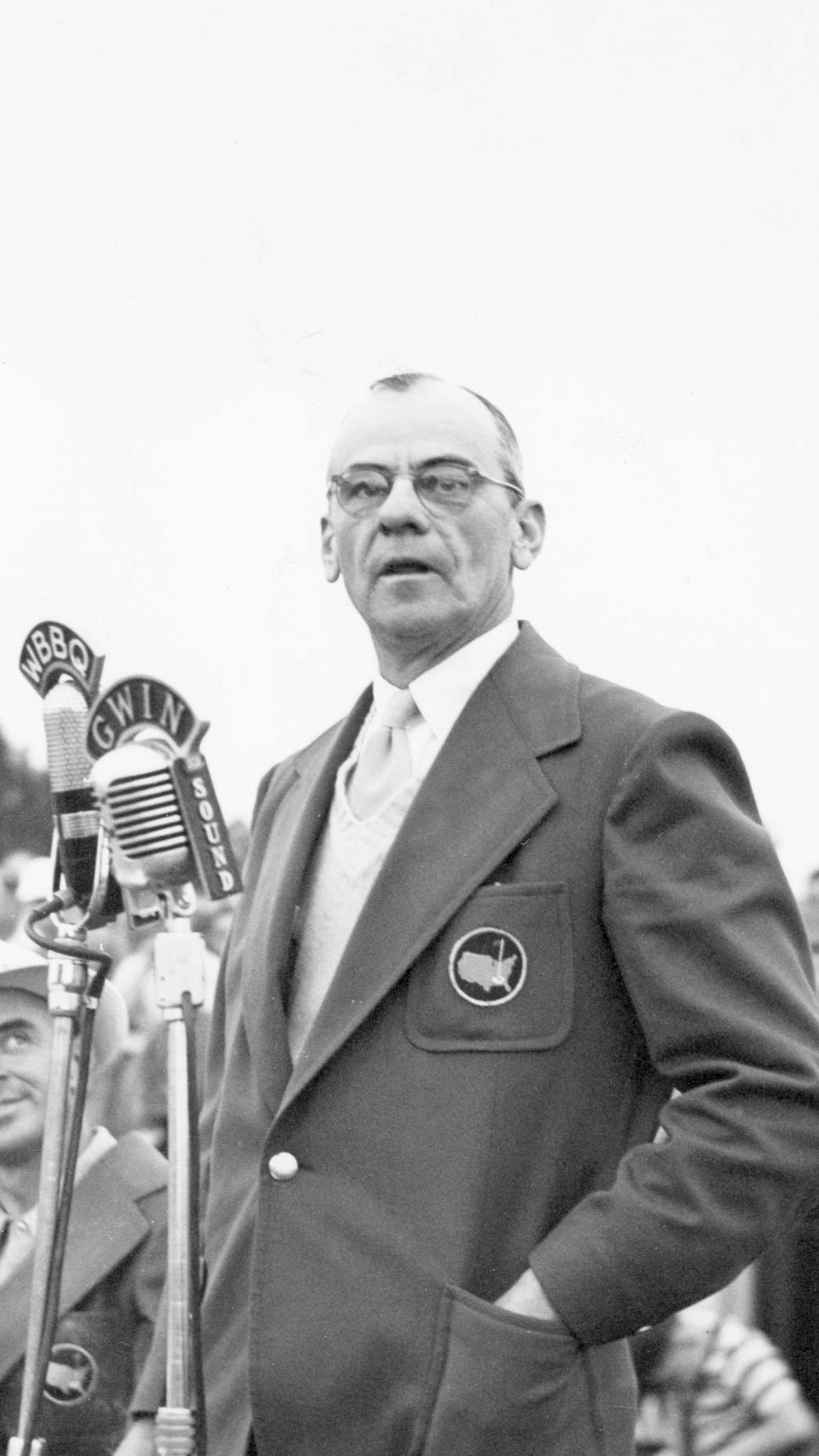
Before long, Roberts’ preference became club tradition. Many of the club’s biggest meals were served with an amuse-bouche of cornbread and olives in homage to the founder. After the first Champions Dinner was held in honor of Ben Hogan in 1952, the dish quickly became a staple.
Today, a conversation with any number of former Masters winners reveals that, among Augusta National’s many traditions, none is more beloved by those at the Champions Dinner than the pre-dinner snack.
“Oh, the olives,” said Larry Mize, the 1987 winner. “Bernhard Langer sits next to me and we love the olives. The olives are out of this world. Even if you’re not an olive fan, I’ve never had an olive like this.”
“Those olives are absolutely the most delicious thing on earth,” agreed Fuzzy Zoeller, the 1979 winner, in a 1999 Sports Illustrated interview with Alan Shipnuck. “Arnold [Palmer] and I usually have a contest to see who can put more of them away.”
Indeed, Augusta National’s olives are so famous, some former winners have grown protective of the tradition. Asked recently about the Champions Dinner’s olive obsession, the ever-playful 1992 champion Fred Couples answered coyly.
“Did Sandy put you up to that?” Couples said with a grin, referencing the 1988 winner, Sandy Lyle. “Was it Trevor [Immelman, ’08]?”
As it turned out, Couples himself was the culprit. He is the only Masters champion to include the club’s olives on his Champions Dinner menu.
“They’re about this big,” Couples said, positioning his thumb and pointer finger about an inch apart. “I sit next to Sandy and he inhales them. I don’t know where they get them, but they’re huge.”
Couples couldn’t remember — or perhaps chose not to disclose — the club’s olive source, but he did offer a clue: anyone could buy them, so long as you knew where to look.
“I’ve never bought ’em,” Couples added. “But everyone at the Champions Dinner buys them, and they ship ’em to their house.”
Rather than accept culpability for disclosing a club secret, Couples steered us toward his old pal Tom Watson (’77, ’81), who he’d heard was on the distribution list.
“Graber olives,” Watson said. “You can buy them in the can. They’re great.”
Then, not sensing the smoking gun, Watson doubled down.
“G-R-A-B-E-R.”
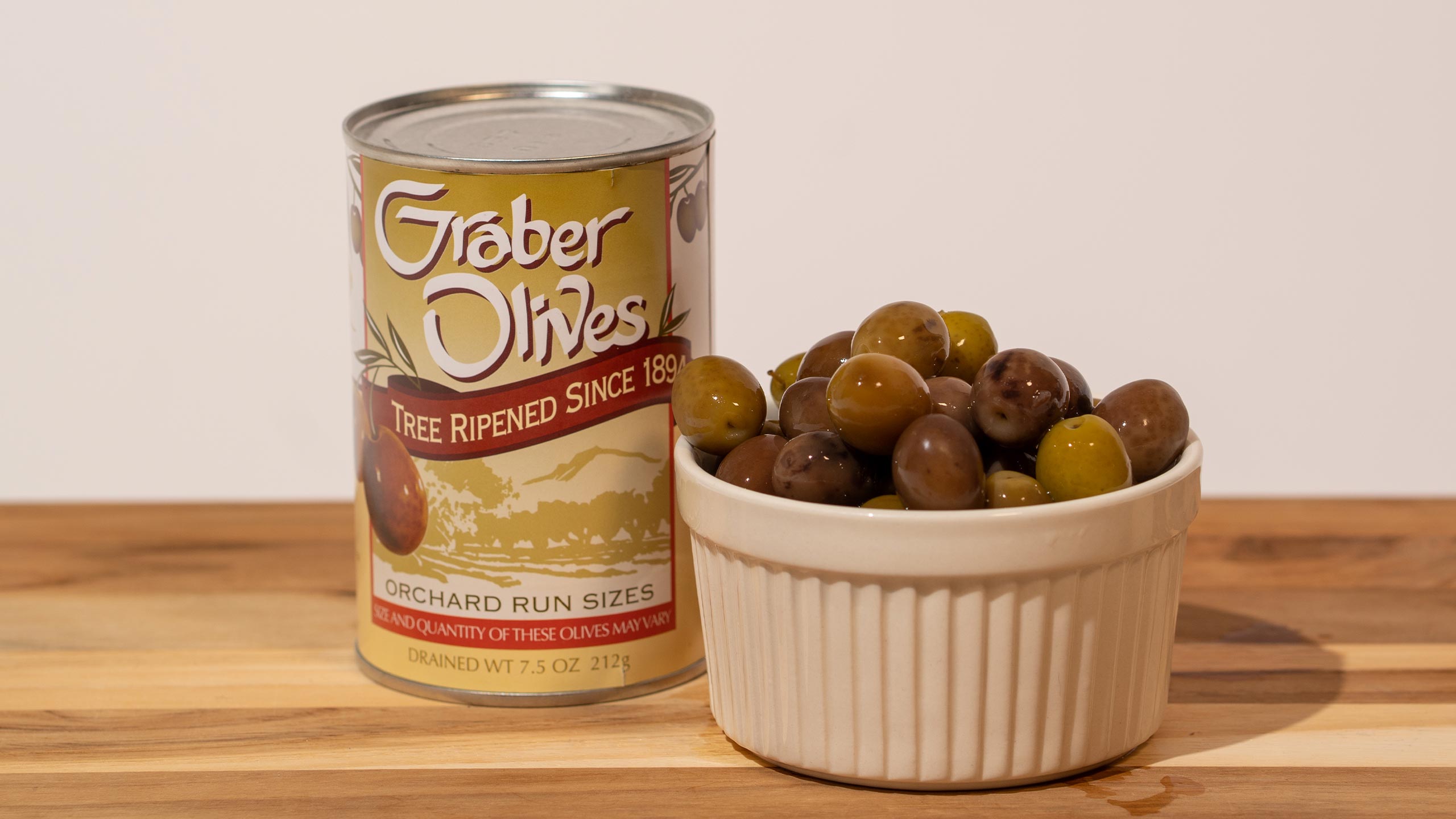
Come On…Can They Really Be That Good?
For me, not a chance. I would rather fight 3 foreign nationals than eat one, yet I digress…Olives are an acquired taste, even these olives.
Back in the early 1980s, Cliff Graber learned that lesson the hard way when he tried to woo a pretty girl with a box of his family’s olives. The woman, who detested green olives, was mortified by the gesture.
“He said, ‘Open a can, try them!’” she remembers. “I stared at them for a while, and finally said, ‘Oh, my family will love them when they come to visit.’”
Cliff would eventually convince the girl, Maura, to try her first Graber olives. Perhaps as a testament to the product, or to his persistence, she gave him a shot. The two have been married for 32 years, forming the third generation of the Graber Olive Co.
“I’m just not a green olive eater,” Maura says today of the initial rejection.
Cliff, it seems, is still getting over it.
“They weren’t green.”
Maura — the family’s matriarch — wasn’t the first family member to hold an aversion to olives, nor would she be the last.
“I’ve tried other olives, but to be honest with you, I don’t like them,” Maura’s son, Robert, the youngest Graber says. “I don’t like the taste at all.”
But Robert, like the three generations of Grabers before him, still adores the family crop.
“If you blindfolded someone and they tasted one of our olives, they wouldn’t even think it was an olive,” Robert says. “It’s a very mild, salty taste. It sort of melts in your mouth.”
For what it’s worth, the hype isn’t purely situational — Graber olives are different from their grocery store counterparts. As opposed to other olives, which are picked from the tree in one fell swoop, Graber olives are “full tree-ripened,” meaning they are removed from the branch only when they’ve reached peak ripeness. This results in larger, more robust fruit, which, combined with the family’s secret saltwater brining process, produces Graber’s distinctive taste. As a result, Graber olives are neither black nor green, but a color wholly their own.
“When we pick them, they’re a purplish, reddish color,” Maura said. “Then they turn greenish brown during the processing. They’re the only olives that can really be called tree-ripened.”
The Graber Olive Company was founded by C.C. Graber in 1894 on the remains of a fruit farm, but it wasn’t until the 1930s that the Grabers realized their good fortune. The Graber olive house was in Ontario, Calif. — directly en route to Hollywood’s two glitziest vacation destinations. “We were partway to Vegas, and halfway to Palm Springs,” Maura said.
Before long, Graber had become the olive to the stars, counting L.A. giants like Bing Crosby, Paul Newman and Bob Hope as devotees. A cult following grew, and soon the Grabers were an institution, shipping cans all over the world. Today, there are four generations of Grabers who have worked in the olive business — C.C., Robert, Cliff and Robert II — which is in its 129th year in 2023.
The family business is a tradition all its own for the Grabers, and that heritage surely endears itself to the family’s one and only bulk client: a golf club — also on the remains of a fruit farm — 150 miles east of Atlanta. It isn’t like the Grabers to offer their cans wholesale, but this club isn’t your average customer.
Around the Graber business, the client goes by only one name… – AUGUSTA!
Here’s My Theory – For the Record I am Conspiratorial
The Graber family has been selling olives to Augusta National for so long, they’re not even sure when the relationship started.
“We’d always been told that Arnold Palmer was the first,” Maura said. “It was 1959, and Arnold Palmer supposedly walked into his green jacket dinner and asked, ‘Where are the Graber olives?’”
There’s little question that Arnie, a winner in 1958, ’60, ’62 and ’64, loved Augusta National’s olives, but it seems unlikely that he was the first person to introduce the fruit to Augusta National. Several accountings of the club’s history trace its olive roots back to Clifford Roberts in the 1930s, decades before Palmer’s arrival. The Graber family concedes it’s possible the Palmer story is just “folklore.” At the very least, it’s evidence that Graber olives were served at the club before Palmer’s Champions Dinner arrival.
“So much of our records are lost or in paper somewhere,” Maura said. “I’m sure we have the answer, but I just don’t know where.”
(The club, following a long-standing tradition of discretion surrounding its business matters, did not respond to GOLF’s request for comment on the origins of its olives.)

There is no such ambiguity around the club’s current ordering structure. Augusta National has purchased olives from Graber the same way since at least the 1950s. A member of the club staff will call Cliff Graber, strictly by phone, to place an order. Historically, the club interacts only with Cliff, and purchases only one product: size-16 olives. And why size 16?
“It’s the biggest one we sell,” Robert said.
According to the Grabers, a size-16 olive measures an average of 1 inch in diameter — a biblical size for the inside of a martini glass. For reference, a golf ball is 1.68 inches in diameter.
Graber sells only a finite number of size-16 cans each season, and inventory is growing more limited due to the effects of climate change. Still, the Graber family ensures an Augusta National-sized order of size-16 cans is set aside at the beginning of each harvest. (Size-16s are sold out on the Graber website, with none expected back in stock soon.)
“All we know is that we’re the only olives they serve,” Maura said.
Some years, as with this year, the club will place multiple orders in a season. But, on average, the Grabers said, Augusta National spends more than $5,000 annually with them. The club’s most recent order was for 528 cans of size-16s — at a cost of a little more than $5,500.
Cost is irrelevant to most Graber olive customers, because few olive-lovers who have tried Grabers find themselves capable of returning to life before them. Witness the scene at the Masters Champions Dinner.
“We love them,” Larry Mize said. “If they don’t bring them around, [Bernhard] Langer and I will request them, and they’ll go get them for us.”
“The olives are famous,” concurs Langer, a champion in 1985 and ’93.
Close to a century after this great tradition began, there is a certain amount of pride the Grabers feel in their relationship with Augusta National — and a certain amount of shock at the response their olives have received.
“I was having work done on my teeth about 10 years ago, and the dentist told me he did an internship where he got to go to the Masters,” Maura recalled. “And he says, ‘I can’t believe it. I sat down at a table at Augusta National and there was a bowl of Graber olives!’”
Sometimes, the Grabers can’t believe it either. After all these years — 129 of them — they’ve become a Masters tradition.
“People just love them,” Maura said. “It’s hard not to get excited about something your customers are so excited about.”
From a distance, it’s easy to see the Graber olive story as one of cosmic destiny; a mingling of fate and divine intervention. But destiny doesn’t explain the one piece of the story the Grabers still can’t answer: How did Clifford Roberts find them?
“Cliff Roberts,” I asked the Grabers recently. “Does that name mean anything to you?”
On the other end of the line, they began to laugh, the noise crackling through the phone.
As the laughter quieted, the elder Graber shuffled toward the phone.
“Well, yes,” he said. “The name does mean something to us.”
“My grandpa was Cliff, and my dad was Robert, and I’m Cliff, and my son is Robert.”
We may never know how Clifford Roberts discovered his beloved Graber olives, but we may not need to. As it turns out, some Masters mysteries are even better unsolved. I hope this one stays locked in the vault!

When JJ Spaun stood over a 64-foot birdie putt on the 72nd hole of the 2025 U.S. Open at Oakmont, few could have predicted what would come next. The ball meandered across the slick green, trickling over every contour, picking up speed at the crest, and then—like it had GPS—dropped center cup. Spaun dropped his putter, raised his arms, and the crowd erupted. With that single stroke, he claimed his first major title in one of the most dramatic finishes in U.S. Open history.
But how does Spaun’s putt stack up against other legendary finishes in the tournament’s storied past? Let’s break down some of the most iconic moments and see where this one lands.
1. Payne Stewart – 1999 U.S. Open at Pinehurst
Perhaps the most iconic putt in U.S. Open history came from Payne Stewart, who nailed a 15-footer for par on the 18th to win by one over Phil Mickelson. The pose—fist pump and outstretched leg—has since been immortalized in a statue at Pinehurst. What made it legendary wasn’t just the putt—it was the context: Stewart’s final major before his tragic death just months later.
Verdict: Iconic and emotional. Spaun’s putt was longer, but Stewart’s was more poetic.
2. Tiger Woods – 2008 U.S. Open at Torrey Pines
Woods drained a 12-foot birdie on the 72nd hole to force a playoff with Rocco Mediate—while basically playing on one leg. That tournament went to sudden death after an 18-hole playoff, and Tiger prevailed. This was peak Tiger drama, pain and all.
Verdict: Spaun’s putt was longer, but Tiger’s win was sheer willpower and mystique.
3. Jack Nicklaus – 1972 U.S. Open at Pebble Beach
With a 1-iron shot that hit the flagstick on 17 and a crucial birdie putt on 18, Jack sealed a dominant win. His precision and timing under pressure showed why he’s the GOAT.
Verdict: Not a putt for the win, but a signature finishing statement from Jack. Spaun’s was more electric in terms of pure putter drama.
4. Ben Hogan – 1950 U.S. Open at Merion
Hogan’s 1-iron into the 18th fairway and the par to force a playoff—just 16 months after a near-fatal car crash—remain legendary. He won the playoff and completed one of golf’s great comeback stories.
Verdict: Larger-than-life comeback. Spaun’s putt had more flair, but Hogan’s win was heroic.
5. JJ Spaun – 2025 U.S. Open at Oakmont
Let’s not underestimate what Spaun accomplished. The pressure was immense. He wasn’t the favorite. And on the most treacherous greens in golf, he buried a 64-foot bomb—a putt most players would be happy to lag to within 5 feet—to win the U.S. Open outright.
Verdict: For distance, surprise, and drama, Spaun’s putt may be the most shocking winning stroke in U.S. Open history.
Final Thoughts
JJ Spaun may not have the résumé of a Nicklaus or Woods, but for one Sunday afternoon in June 2025, he created a moment that will live in golf lore forever. Spaun’s putt was longer than Stewart’s, more unexpected than Tiger’s, and more dramatic than any final-hole finish in recent memory.
In terms of pure clutch putting? It might just be the greatest walk-off in U.S. Open history.
Blog
Meet The Canadian Open Qualifier Tied To ClickIt Golf!
“This week was incredible,” he said. “A dream come true.”

Josh Goldenberg doesn’t plan to quit his day job. But he had a great time dabbling in his old career.
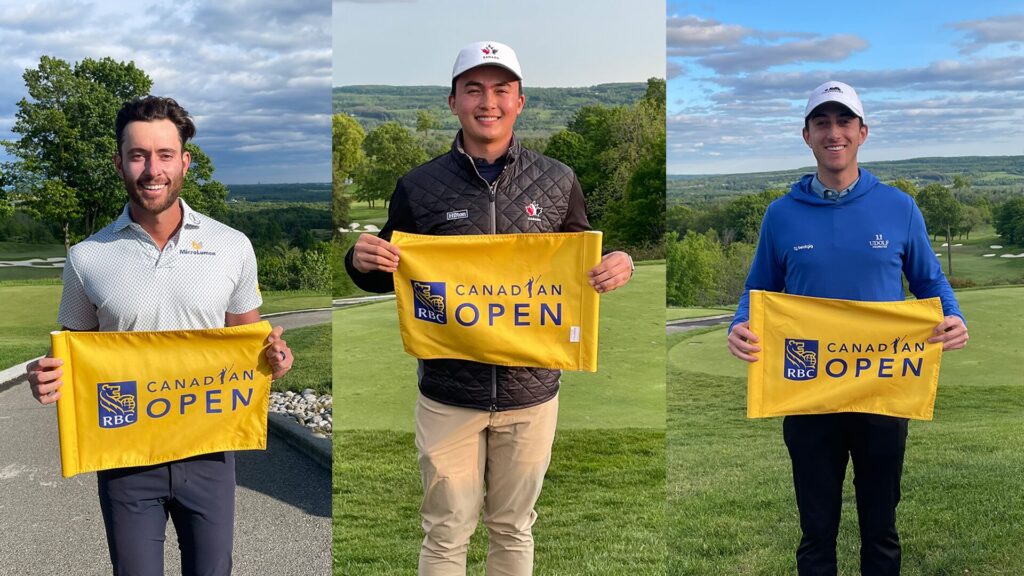
He gave up on pro golf, then qualified for his first PGA Tour event.
Read the full story here
https://golf.com/news/josh-goldenberg-rbc-canadian-open/?amp=1
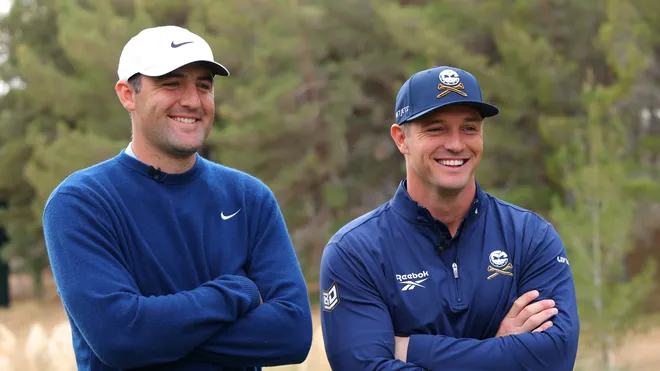
In the ever-evolving world of professional golf, few rivalries capture the contrast of style and substance like Scottie Scheffler versus Bryson DeChambeau. While both have claimed massive wins and global headlines, their paths to success and how they play the game couldn’t be more different. Here’s a deep dive into their strengths, weaknesses, career highlights, and what makes each stand out in today’s competitive landscape.
Backgrounds and Styles
Scottie Scheffler
The Dallas-born Scheffler embodies a classic, workmanlike approach to golf. Known for his calm demeanor, efficient swing, and remarkable consistency, Scheffler has risen to the top of the world rankings with little flash but elite-level substance. His game is built on balance, precision, and one of the most reliable tee-to-green performances the sport has seen in years.
Bryson DeChambeau
Nicknamed “The Scientist,” DeChambeau has taken an analytical and experimental approach to the game. He’s redefined physical fitness in golf, adding serious bulk to increase driving distance. Known for using single-length irons and obsessing over launch angles and biomechanics, Bryson is a true disruptor. His aggressive style polarizes fans and analysts, but it undeniably commands attention.
Strengths
Scheffler
- Tee-to-Green Excellence: Leads the PGA Tour in strokes gained tee-to-green.
- Consistency: Rarely misses cuts and often finishes in the top 10.
- Short Game: Exceptional touch and creativity around the greens.
- Mental Game: Composed under pressure; rarely rattled.
DeChambeau
- Driving Distance: One of the longest hitters in the game; regularly over 320 yards.
- Innovation: Willing to take unconventional approaches for marginal gains.
- Power Play: Dominates par 5s and shortens long courses with his length.
- Confidence: Self-belief and boldness to attempt shots most won’t.
Weaknesses
Scheffler
- Putting: Historically his weakest stat, though he’s shown improvement.
- Media Presence: More reserved; lacks the big personality that moves the needle for fans and brands.
DeChambeau
- Inconsistency: Can be volatile—either dominating or struggling.
- Course Management: Aggressiveness sometimes leads to trouble.
- Injury Risk: His physical transformation has come with some health setbacks.
Biggest Wins
Scottie Scheffler
- The Masters (2022)
- The Players Championship (2023)
- Multiple WGC and Signature Events
As of 2025, Scheffler has claimed over 10 PGA Tour titles and continues to rack up top finishes in majors and elite events.
Bryson DeChambeau
- U.S. Open (2020)
- Arnold Palmer Invitational (2021)
- Multiple LIV Golf Wins
DeChambeau made headlines by joining LIV Golf, where he’s claimed multiple high-stakes victories, including a team championship and a dominant individual LIV win in 2023.
Career Earnings
Scheffler:
Over $50 million in PGA Tour earnings alone, with additional income from endorsements like Nike, TaylorMade, and Rolex.
DeChambeau:
Estimated $60–$80 million, largely boosted by a reported $100+ million LIV Golf contract and additional prize money. His endorsements have shifted due to his controversial LIV move, but he remains a marketable figure.
Similarities
Both are U.S.-born and played collegiate golf (Scheffler at Texas, DeChambeau at SMU).
Each has reached the top 10 in the Official World Golf Ranking.
Both have won majors and represented the U.S. in Ryder Cups.
Each has shown a willingness to be different—Scheffler through quiet dominance, DeChambeau through outspoken innovation.
Key Differences
| Trait | Scottie Scheffler | Bryson DeChambeau |
|---|---|---|
| Playing Style | Traditional, consistent | Aggressive, experimental |
| Physical Transformation | Minimal | Extreme (bulk and strength) |
| Equipment | Standard setup | Single-length irons |
| Public Persona | Reserved, grounded | Outspoken, controversial |
| Tour Affiliation | PGA Tour loyalist | LIV Golf convert |
Final Thoughts
Scheffler and DeChambeau represent two archetypes in modern golf: one a quiet technician, the other a showman scientist. Whether you admire Scottie’s stoic efficiency or Bryson’s radical reinvention, both are changing the game in their own way. And in a sport where individuality meets performance, there’s room—and demand—for both.
-

 Product Review6 years ago
Product Review6 years agoThe Perfect Practice Putting Mat Review by Jason Tenzer
-

 Blog4 years ago
Blog4 years agoLoophole Rule Offers PGA Tour Pros a Mulligan
-

 Blog4 years ago
Blog4 years ago2021 Buyer’s Guide: The Top 10 Value Golf Balls For Distance & Feel
-

 Blog4 years ago
Blog4 years agoGolf Marriage Counselor
-

 Blog6 years ago
Blog6 years ago9 Biggest Chokes Of The Past Decade
-

 Product Review6 years ago
Product Review6 years agoTHE ADJUSTABLE IRONS: WALKING STICKS GOLF CLUBS
-

 Blog4 years ago
Blog4 years agoWhat Your Golf Clubs Say About You
-

 Equipment6 years ago
Equipment6 years agoOHK Sports Interview by Jason Tenzer























